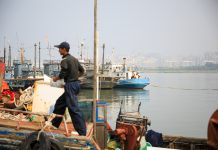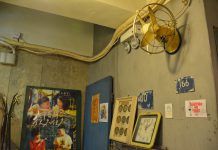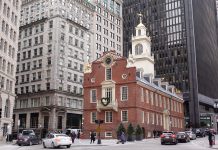Villagers initiate conservation projects to unite the neighbourhood and save their home
By Ariel Lai & Sarah Ryou
Pokfulam Village is often described as a “brighter and cleaner” version of Kowloon Walled City. Tin-roofed huts, narrow alleys and laundry hanging outside shabby huts are all features of the 400-year-old village which is said to be one of the last indigenous villages on Hong Kong Island.
Surrounded by high rise buildings, the village has witnessed important historical moments of Hong Kong, the arrival of Missions étrangères de Paris in the 1870s, and the establishment of the largest dairy farm in Hong Kong in the 19th century, just to name a few. Today, the village is home to 3,000 residents with different family names.
Like many other rural villages, Pokfulam Village has been under constant threats of urban development. “Even people living here felt pessimistic about the village’s future at that time. Everyone was feeling gloomy,” Aaron Wong Kwong-cheung, vice-chairperson of the Pokfulam Village Cultural Landscape Conservation Group, recalls the early days when the group was established in 2009.
The group has initiated various festive activities for villagers and outsiders, to reunite the village with a “sense of belonging”. They also want to introduce the village culture to the public. Fire Dragon Dance performed at Mid-Autumn Festival is one of the highlights.
The conservation effort eventually paid off when Pokfulam Village successfully made its appearance on the 2014 World Monuments Watch – a programme which uses cultural heritage conservation to empower communities and improve the sustainability of their cherished sites. Since then about 4,000 visitors have joined the village’s biweekly walking tours.
Ms Tang, who visits the village with her husband and child during weekends and attends a Lion Head crafting workshop, is fascinated by the unique history and culture of Pokfulam Village. She first learned about the culture of the village when she joined the walking tour. “It’s rare for a village to organise walking tours for outsiders, and I find it very interesting,” she says.
The village has gained local and international recognition, villagers have built a community which could decide its own destiny on the path of conservation. Steven Chui Chu-kwan, chairperson of the conservation group, says: “We have to start from the community level and we cannot just rely on the government to take action.”
Nigel Ko Wing-hong, another vice-chairperson of the group, believes the “way of living” of the village and its wisdom are priceless gems worth passing down to the next generation. By means of conserving the “hardware”, he hopes to preserve the intangible culture in the village, and ultimately, the “diversity of living” in Hong Kong.
“Pokfulam Village is a treasure box. Hidden treasures are concealed in every household, waiting to be uncovered,” he says.
Edited by Valerie Wan
















































